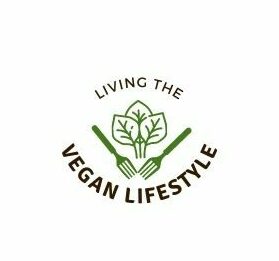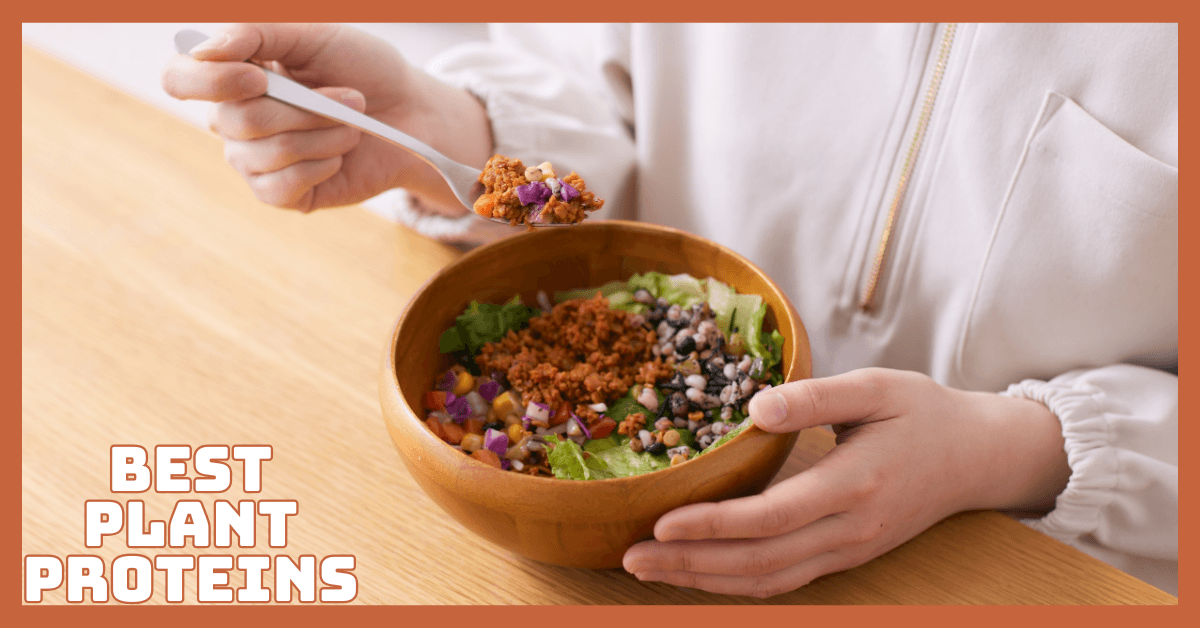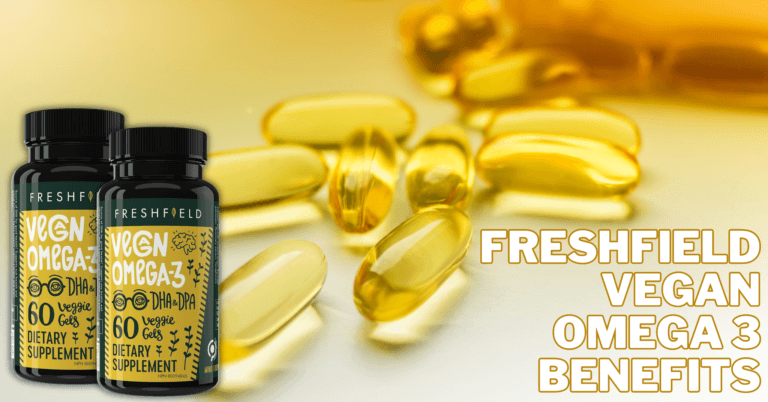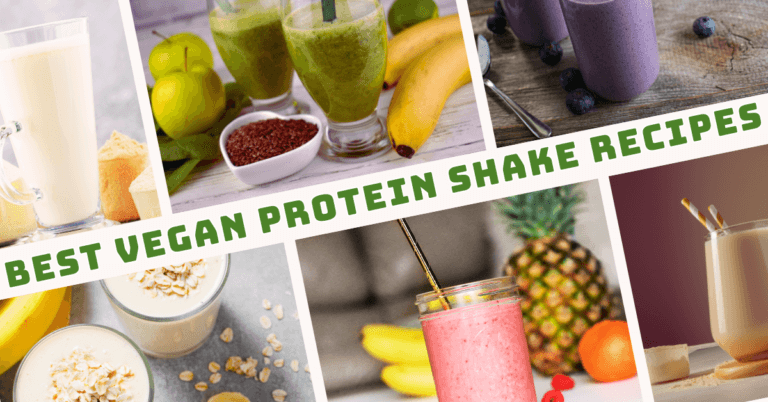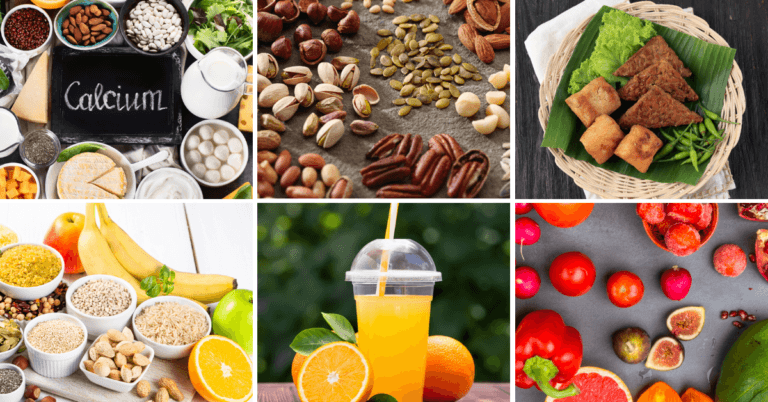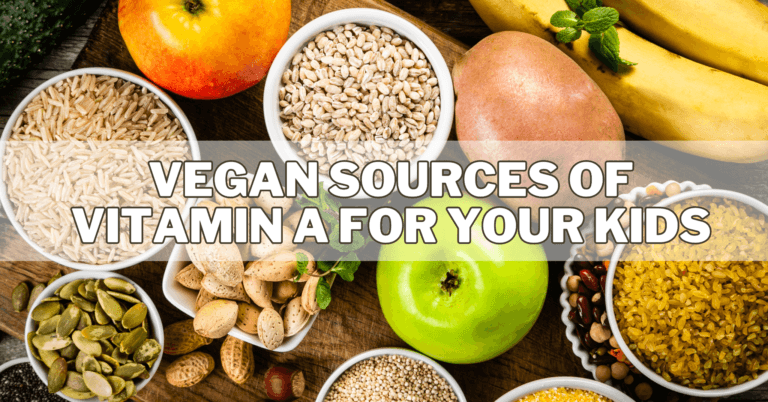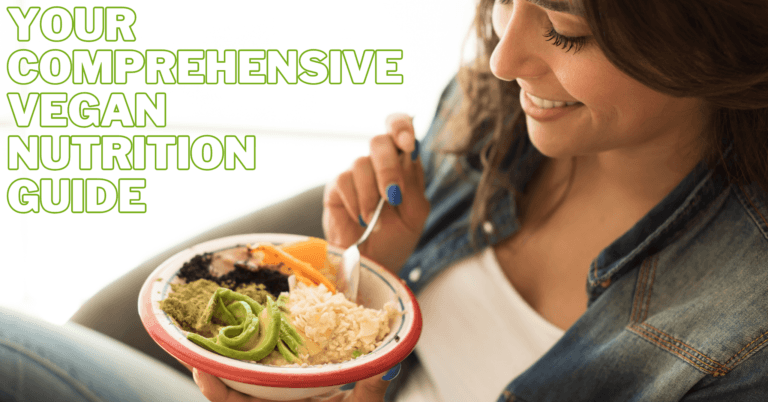Best Plant Proteins For Strength And Energy
Protein is an essential component of the body. Plant-based proteins are a nutritional powerhouse with additional health benefits, but animal sources are the main topic of discussion.
The best plant proteins offer a nutritious alternative to animal-based options, providing essential amino acids, fibre, and antioxidants to support overall health.
This blog will cover the best plant protein sources, their benefits, and how to incorporate them into a balanced diet for overall health.
Best Plant Proteins For Strength And Energy
1. Legumes: The Powerhouse Of Plant Protein
Legumes, including beans, lentils, and peas, are among the best plant-based protein sources.
Lentils
Protein Content
Lentils provide approximately 18g of protein per cooked cup (198g), making them an excellent plant-based protein source. They support muscle growth, repair, and overall health while keeping you full and energized for longer.
Benefits
Lentils are rich in Fibre, iron, and folate. They promote heart health by lowering cholesterol, improving digestion, and preventing anemia.
Their high nutrient content also supports brain function, boosts energy levels, and helps maintain stable blood sugar levels throughout the day.
How To Use
Lentils are adaptable and can be added to salads, vegetarian burgers, stews, and soups. They absorb flavours well, cook quickly, and add a hearty texture to dishes, making them a nutritious and delicious choice.
Recipe: Vegan Lentil Curry
Discover our vegan lentil curry, a nutrient-dense, protein-packed meal that delivers approximately 15g per serving. It also contains essential fibre, vitamins, and minerals for optimum wellness.
Prep time: 10 minutes | Cook time: 35 minutes | Total time: 45 minutes | Servings: 4
Ingredients
- Dried lentils (green or brown): 1 cup, rinsed
- Diced tomatoes: 1 can (14 oz)
- Coconut milk: 1 can (14 oz)
- Onion: 1 small, diced
- Garlic: 2 cloves, minced
- Ginger: 1-inch piece, grated
- Curry powder: 1 tablespoon
- Turmeric: 1 teaspoon
- Cumin: 1 teaspoon
- Paprika: ½ teaspoon
- Sea salt: ½ teaspoon or to taste
- Vegetable broth: 2 cups
- Olive oil: 1 tablespoon
- Spinach: 2 cups (optional)
- Fresh cilantro for garnish
- Cooked rice or naan for serving
Method
- Heat the olive oil. Sauté the chopped onions until they get tender.
- Stir in garlic, ginger, curry powder, turmeric, cumin, and paprika. Cook for about 1 minute until fragrant.
- After bringing it to a boil, add the lentils, diced tomatoes, vegetable broth, and sea salt. Simmer for 25 to 30 minutes.
- Pour in coconut milk and mix well. Simmer for another 5 minutes, adding spinach if using.
- Adjust the seasoning and serve hot with fresh cilantro on top.
- Enjoy with rice or naan!
Nutrition Facts (per serving)
- Calories: 320
- Protein: 15g
- Carbohydrates: 40g
- Fibre: 12g
- Fat: 12g
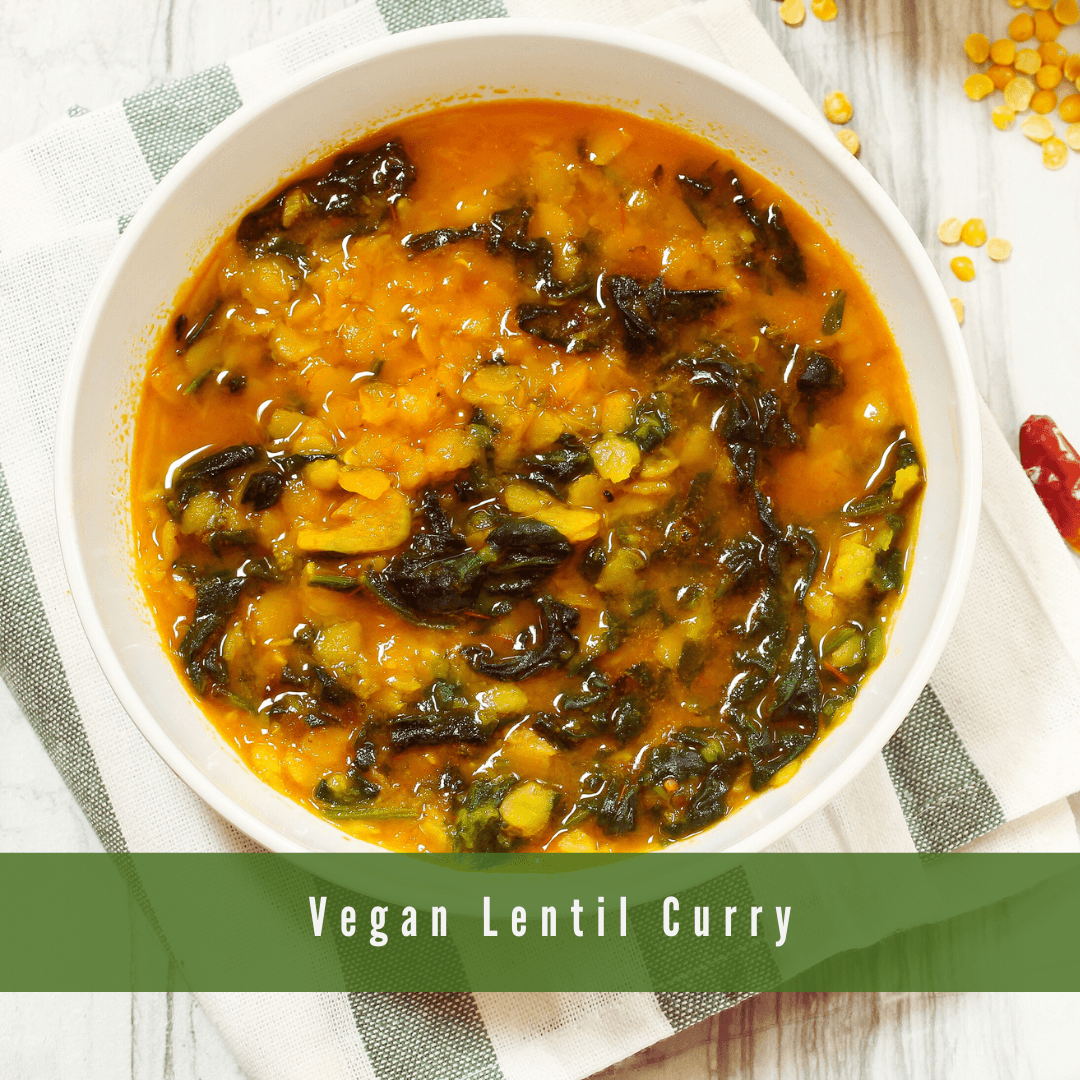
Chickpeas (Garbanzo Beans)
Protein Content
Chickpeas are among the best plant proteins, providing around 15 grams per cooked cup to support muscle growth, tissue repair, and energy levels.
This amount helps support muscle growth, repair tissues, and maintain energy levels, especially in vegetarian and vegan diets.
Benefits
Chickpeas are rich in iron, fibre, and antioxidants. These nutrients promote digestive health, regulate blood sugar levels, and reduce inflammation.
Their iron content is especially beneficial for vegans, helping to prevent anemia. Antioxidants protect cells from damage and support overall well-being.
How To Use
Chickpeas are incredibly versatile! Blend them into creamy hummus, toss them into fresh salads, enjoy them roasted as a crunchy snack, or simmer them into flavorful curries. Their mild, nutty taste makes them easy to incorporate into various delicious dishes.
Recipe: Spiced Roasted Chickpeas: A Crunchy, Protein-Packed Snack
Roasted chickpeas are a delicious, crunchy, and protein-rich snack that’s easy to prepare. Packed with fibre and essential nutrients, this flavorful treat is perfect for healthy munching or adding extra texture to salads and bowls.
Prep time: 10 minutes | Cook time: 30 minutes | Total time: 40 minutes | Servings: 4
Ingredients
- Chickpeas: 1 can (15 oz)
- Olive oil: 1 tablespoon
- Sea salt: ½ teaspoon
- Garlic powder: ½ teaspoon
- Smoked paprika: ½ teaspoon
- Black pepper: ¼ teaspoon
- Cayenne pepper: ¼ teaspoon (optional for heat)
Method
- Set the oven temperature to 400°F (200°C). Line a baking sheet with parchment paper.
- Pat the chickpeas dry using a clean towel to remove excess moisture.
- Mix chickpeas, spices, and olive oil and toss until coated.
- Line the baking sheet with them in a single layer.
- Bake until brown and crispy; shake the pan halfway through the 30 minutes.
- Let them cool slightly before enjoying them!
Nutrition Facts (per serving)
- Calories: 120
- Protein: 6g
- Carbohydrates: 18g
- Fibre: 5g
- Fat: 4g
Black Beans
Protein Content
Black beans are considered one of the best plant proteins. They offer 15 grams of protein per cooked cup, which supports muscle repair, promotes satiety, and provides a balanced diet for vegans and vegetarians.
Benefits
Packed with fibre, magnesium, and folate, black beans promote digestive health by supporting gut bacteria and preventing constipation.
Magnesium aids muscle and nerve function, while folate is essential for cell growth and brain health, making black beans a powerhouse of nutrition.
How To Use
Black beans are incredibly versatile! They can be used as a filling for tacos and burritos, blended into hearty soups, or mashed to create delicious, protein-rich veggie burgers. Their earthy flavour and creamy texture complement a variety of savoury dishes.
Recipe: Spicy Black Bean Tacos
These spicy black bean tacos are packed with protein, fibre, and bold flavours, making them a satisfying and nutritious meal. Easy to make and customizable with toppings, they're ideal for a quick lunch or dinner.
Prep time: 10 minutes | Cook time: 15 minutes | Total time: 25 minutes | Servings: 4
Ingredients
- Black beans: 1 can (15 oz), drained and rinsed
- Olive oil: 1 tablespoon
- Onion: ½ small, finely chopped
- Garlic: 2 cloves, minced
- Cumin: ½ teaspoon
- Smoked paprika: ½ teaspoon
- Chilli powder: ¼ teaspoon
- Sea salt: ¼ teaspoon
- Lime: ½ juiced
- Corn tortillas: 8 small
- Toppings: diced avocado, chopped cilantro, salsa, shredded lettuce, or vegan cheese
Method
- Heat the olive oil over medium heat. Add chopped onion and sauté until soft, about 3 minutes.
- Cook for one more minute after adding the garlic until fragrant.
- Stir in the black beans, cumin, smoked paprika, chilli powder, and sea salt. Cook for 5 minutes, mashing some beans to thicken the mixture.
- Stir thoroughly after adding the lime juice. Turn off the heat.
- Reheat the tortillas in a dry pan or microwave for a few seconds.
- After filling each tortilla with the black bean mixture, top with avocado, cilantro, salsa, lettuce, or vegan cheese.
- Serve immediately and enjoy!
Nutrition Facts (per serving – 2 Tacos)
- Calories: 250
- Protein: 12g
- Carbohydrates: 38g
- Fibre: 10g
- Fat: 6g
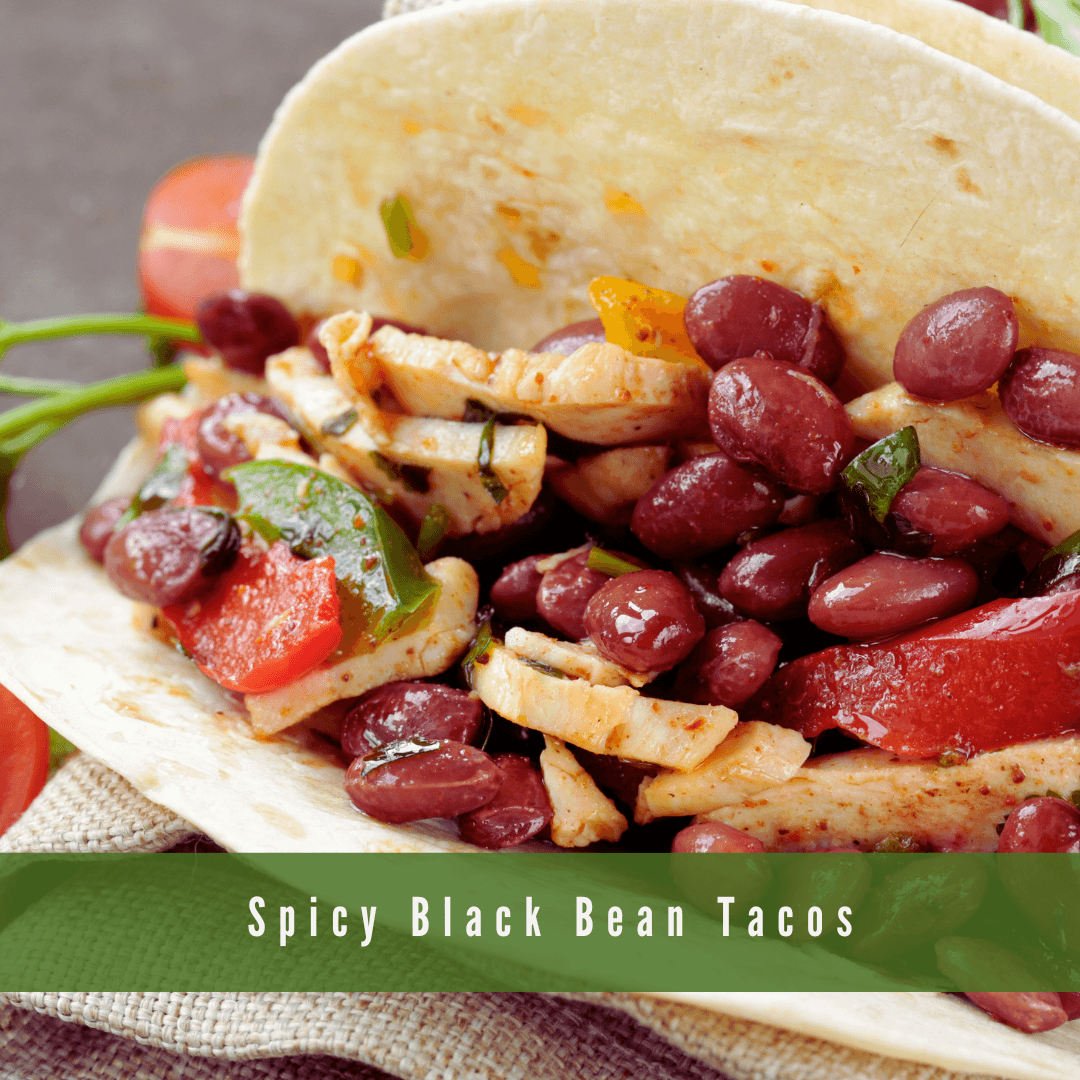
2. Nuts And Seeds: Nutrient-Dense Protein Sources
Nuts and seeds contain vital protein, vitamins, minerals, and good fats. They are also excellent for cooking and snacking.
Chia Seeds
Protein Content
Chia seeds are an outstanding plant-based protein source. They offer about 5 grams of protein in every 2-tablespoon serving.
Their protein helps with muscle repair and energy, making them an excellent addition to vegetarian, vegan, and fitness-focused diets.
Benefits
Chia seeds are among the best plant proteins. They are abundant in antioxidants, Fibre, and omega-3 fatty acids, which protect against inflammation and cell damage.
These nutrients support heart health and digestion. Their Fibre content supports gut health, omega-3s boost brain function, and antioxidants help combat free radicals, protecting cells from damage and aging.
How To Use
Chia seeds are incredibly versatile! They may be added to smoothies to increase protein, stirred into oatmeal for texture, or soaked in plant-based milk to make a nutritious and creamy chia pudding that's great for breakfast or a healthy snack.
Recipe: Vanilla Chia Pudding
This vanilla chia pudding is a creamy, protein-packed, Fibre-rich breakfast or snack. Loaded with omega-3s and antioxidants, it’s a perfect make-ahead meal that’s delicious and nutritious. Customize it with your favourite toppings for extra flavour and texture!
Prep time: 5 minutes | Chill time: 2 hours (or overnight): Total time: 2-8 hours | Servings: 2
Ingredients
- Chia seeds: ¼ cup
- Unsweetened almond milk: 1 cup
- Maple syrup: 1 tablespoon
- Vanilla extract: ½ teaspoon
- Fresh fruit, nuts, or granola for topping (optional)
Method
- Combine the chia seeds, almond milk, maple syrup, and vanilla extract in a bowl or jar and stir well.
- Let it sit for 5 minutes, then stir again to prevent clumping.
- Cover and chill for at least two hours or overnight to make it thicker.
- Before serving, stir and top with fresh fruit, nuts, or granola. Enjoy!
Nutrition Facts (per serving)
- Calories: 150
- Protein: 5g
- Carbohydrates: 15g
- Fibre: 8g
- Fat: 7g
Flaxseeds
Protein Content
Flaxseeds provide about 5 grams of protein per 2-tablespoon serving. Therefore, they complement plant-based diets, providing vital amino acids that promote energy and muscle repair while completing a nutrient-dense, well-balanced diet.
Benefits
Flaxseeds are considered one of the best plant proteins. They provide potent antioxidants, like lignans, which cut the risk of heart disease and inflammation and guard against some types of cancer. These antioxidants neutralize free radicals in the body, promoting overall health and wellness.
How To Use
Ground flaxseeds are versatile and easy to add to meals. Stir them into smoothies for a protein boost, mix them into oatmeal for added texture, or use them as an egg substitute in baking by combining them with water for a vegan option.
Recipe: Flaxseed Oatmeal
Start your day with this simple and nutrient-packed flaxseed oatmeal. Rich in fibre, omega-3s, and plant-based protein, it's the perfect breakfast to keep you full and energized. Add your preferred fruits and garnishes to make it a filling supper.
Prep time: 5 minutes | Cook time: 5 minutes | Total time: 10 minutes | Servings: 2
Ingredients
- Rolled oats: 1 cup
- Unsweetened almond milk: 2 cups
- Ground flaxseeds: 2 tablespoons
- Maple syrup: 1 tablespoon (optional for sweetness)
- Cinnamon: ½ teaspoon
Ingredients For The Toppings
- Sliced banana
- Berries
- Nuts
- Seeds (optional)
Method
- Bring the almond milk to a boil in a medium saucepan over medium heat.
- Add rolled oats and reduce the heat. Simmer for 5 minutes, stirring occasionally.
- Once the oats have thickened, stir in ground flaxseeds, maple syrup, and cinnamon.
- Remove from heat and let it sit for a minute to thicken further.
- Divide the oatmeal into bowls and top with sliced bananas, berries, or your favourite toppings. Serve warm and enjoy!
Nutrition Facts (per serving)
- Calories: 210
- Protein: 8g
- Carbohydrates: 35g
- Fibre: 7g
- Fat: 7g
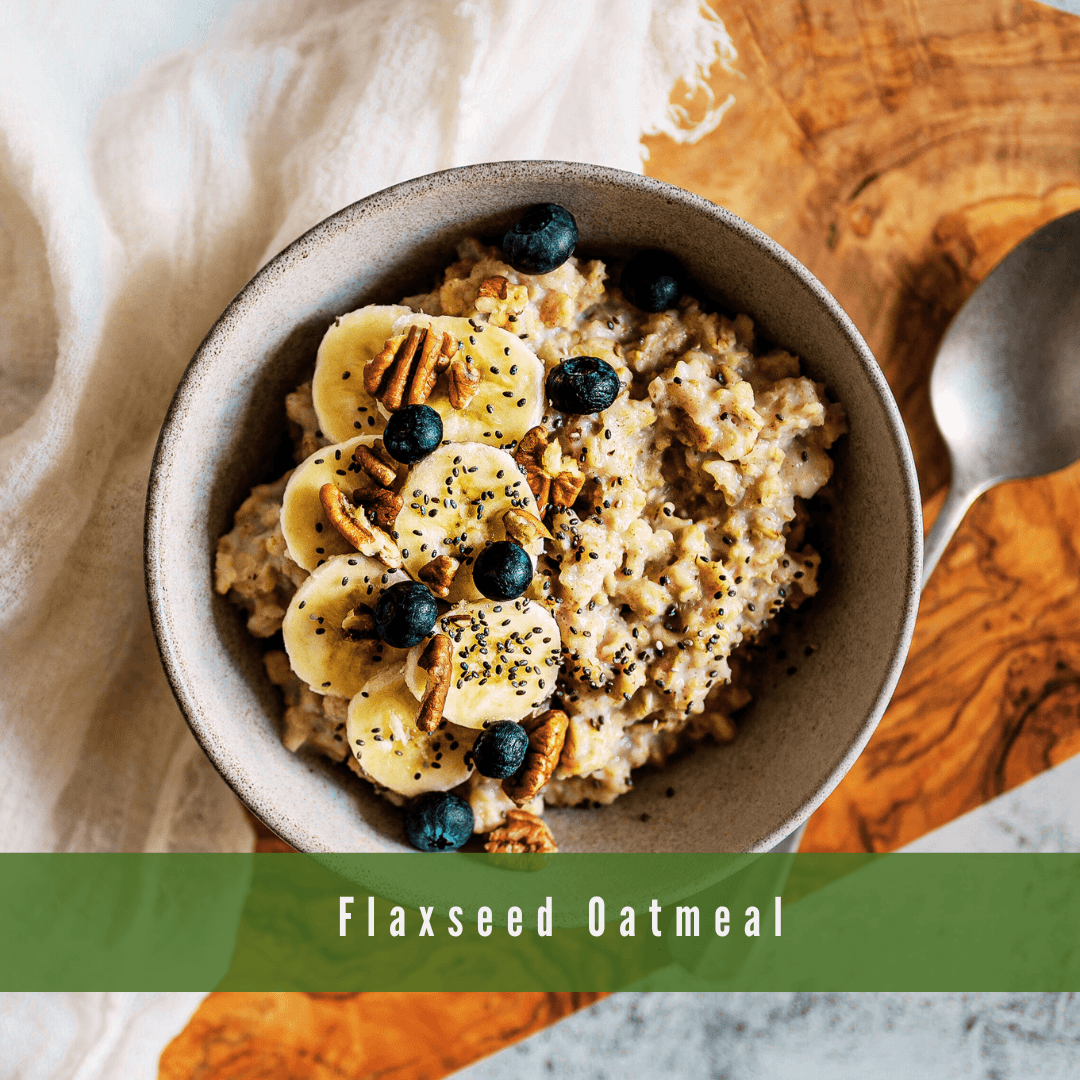
3. Whole Grains: More Than Just Carbs
Whole grains provide protein, fibre, B vitamins, and minerals like magnesium and iron.
Quinoa
Protein Content
Quinoa is one of the best plant proteins. It offers 8 grams of protein per cooked cup and provides all nine essential amino acids, making it a complete protein source for plant-based diets.
Benefits
Quinoa is a complete protein that contains all nine essential amino acids the body cannot synthesize. This makes it vital for muscle repair, tissue growth, and overall health, and it offers a high-quality protein alternative to meat.
How To Use
Quinoa is an incredibly versatile pantry staple. It can be used as a base for grain bowls, mixed into salads for extra texture, or as a side dish to complement vegetables, legumes, or protein-rich meals.
Recipe: Quinoa Salad With Roasted Vegetables
This quinoa salad with roasted veggies is vibrant, wholesome, and high-protein. Packed with fibre, vitamins, and all nine essential amino acids, quinoa is perfect as a main dish or a hearty side dish for any occasion.
Prep time: 10 minutes | Cook time: 30 minutes | Total time: 40 minutes | Servings: 4
Ingredients
- Quinoa: 1 cup
- Water or vegetable broth: 2 cups
- Cherry tomatoes: 1 cup, halved
- Bell peppers: 1 cup, chopped
- Zucchini: 1 small, chopped
- Olive oil: 1 tablespoon
- Dried oregano: 1 teaspoon
- Sea salt and pepper to taste
- Lemon juice: 1 tablespoon
- Fresh parsley: 2 tablespoons, chopped
Method
- Set the oven's temperature to 400°F (200°C).
- Add olive oil, oregano, sea salt, pepper, cherry tomatoes, bell peppers, and zucchini. Spread on a baking sheet and roast for 20 to 25 minutes or until soft.
- After rinsing the quinoa in cold water, put it in a pot with two cups of vegetable broth. Bring to a boil, lower the heat, and simmer until the liquid is absorbed for about 15 minutes.
- Let the quinoa cool a little and fluff it with a fork.
- Put the quinoa and roasted veggies in a big bowl. Add some chopped parsley and squeeze in some lemon juice. Toss to mix.
- Serve warm or chilled. Enjoy!
Nutrition Facts (per serving)
- Calories: 250
- Protein: 8g
- Carbohydrates: 45g
- Fibre: 6g
- Fat: 8g
Oats
Protein Content
Oats are among the best plant proteins, providing 6 grams of protein per cooked cup to support muscle repair, energy, and sustained fullness, making them an ideal breakfast choice.
They support muscle repair and provide energy, making them an excellent breakfast option to kickstart your day with sustained fullness.
Benefits
Oats are rich in beta-glucan, a soluble Fibre that supports heart health. Beta-glucan helps reduce cholesterol levels, improve blood sugar regulation, and boost immune function, making oats a heart-friendly food choice for cardiovascular wellness.
How To Use
Oats are incredibly versatile. Make traditional oatmeal for a warm breakfast, blend it into smoothies for added Fibre and protein, or incorporate it into baking recipes like cookies and muffins for a nutritious twist on your favourite treats.
Recipe: Classic Oatmeal With Berries And Almonds
Start your day with a bowl of warm and wholesome oatmeal, topped with fresh berries and almonds. Packed with protein, fibre, and heart-healthy nutrients, this breakfast is satisfying and delicious—perfect for energizing you throughout the morning.
Prep time: 5 minutes | Cook time: 5 minutes | Total time: 10 minutes | Servings: 2
Ingredients
- Rolled oats: 1 cup
- Unsweetened almond milk: 2 cups
- Chia seeds: 1 tablespoon (optional)
- Maple syrup: 1 tablespoon (optional)
- Mixed berries (blueberries, strawberries, raspberries): ½ cup
- Sliced almonds: ¼ cup
- Cinnamon: ½ teaspoon (optional)
Method
- Bring the almond milk to a boil over medium heat.
- After adding the oats, lower the heat and simmer for minutes, stirring now and again, until the oats are tender and have soaked up most of the liquid.
- Add cinnamon, maple syrup, and chia seeds; whisk to mix.
- Divide the oatmeal between two bowls.
- Top with fresh mixed berries and sliced almonds. Serve warm and enjoy!
Nutrition Facts (per serving)
- Calories: 220
- Protein: 6g
- Carbohydrates: 34g
- Fibre: 6g
- Fat: 7g
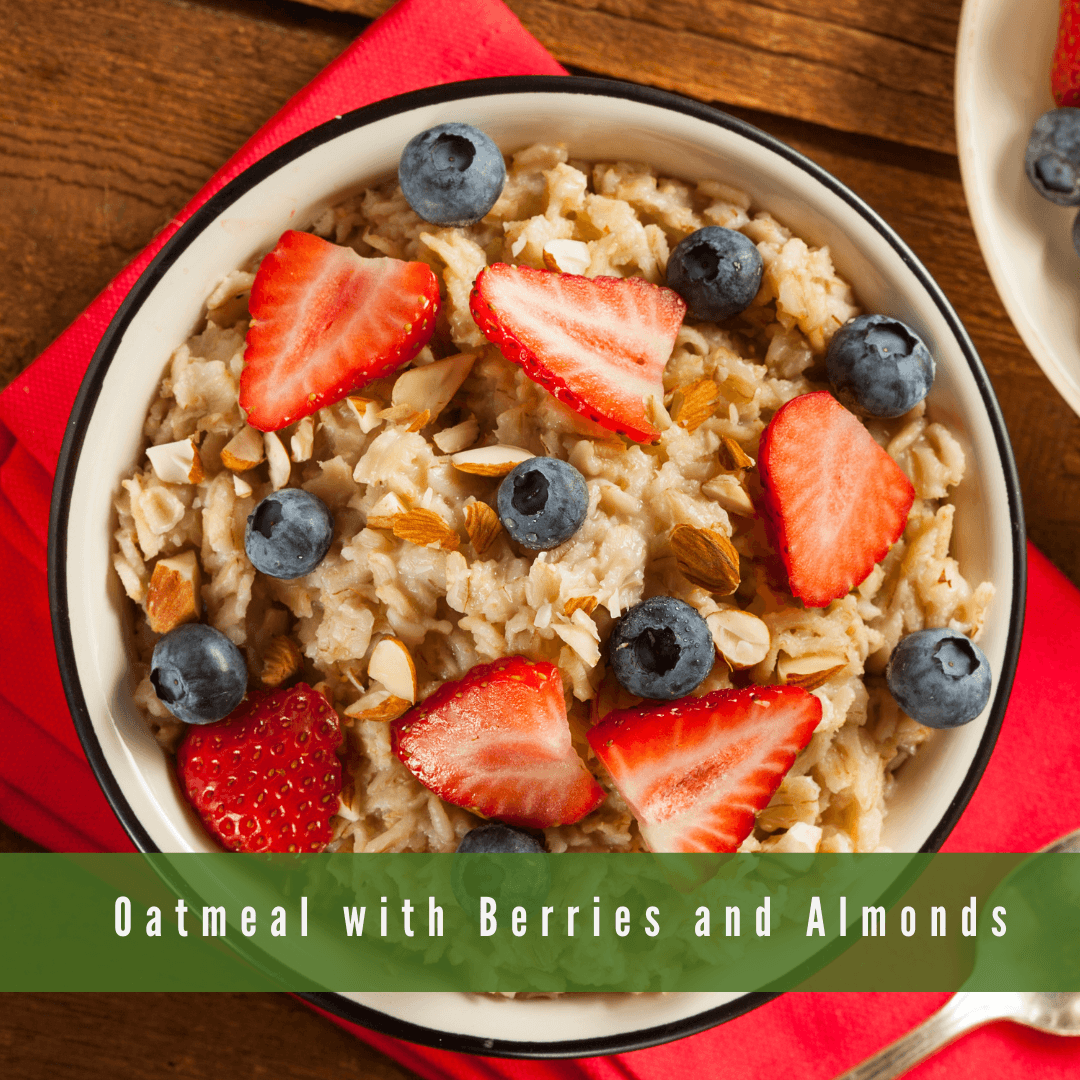
FAQs
1. Can You Consume Enough Plant-Based Protein?
Yes, many plant-based foods, such as quinoa, lentils, and hemp seeds, are rich in protein and can quickly meet daily protein needs when consumed in a balanced diet.
2. How Do Plant Proteins Compare To Animal Proteins?
Generally speaking, plant proteins have less cholesterol and saturated fat than animal proteins. While some plant proteins may lack one or two essential amino acids, eating a variety ensures a complete profile.
3. Are Plant Proteins Suitable For Muscle Building?
Absolutely! Many plant proteins, like those in quinoa and lentils, support muscle building just as well as animal proteins, provided you consume a variety of plant-based protein sources.
4. Can I Use Plant Proteins In Smoothies?
Yes, plant proteins like hemp seeds, chia seeds, and pea protein are perfect for them. They provide protein without altering the flavour, making them easy to add to blends.
Conclusion
Incorporating the best plant proteins, such as quinoa, oats, and hemp seeds, into your diet helps support energy, muscle repair, and heart health while providing essential nutrients for overall well-being.
Nutrient-rich foods can quickly meet your protein needs while you enjoy diverse, delicious meals. Whether you are vegan, vegetarian, or simply looking to diversify your diet, plant proteins offer essential nutrients for energy, muscle repair, and heart health.
I trust you enjoyed this article on the Best Plant Proteins For Strength And Energy. Please stay tuned for more plant-based recipes, vegan travel tips, and lifestyle inspiration.
Take care!
— JeannetteZ 🌿
💬 Your Opinion Is Important To Me
Do you have thoughts, ideas, or questions? I’d love to hear from you. Please leave your comments below, or email me directly at Jeannette@LivingTheVeganLifestyle.org.
📚 More Vegan Lifestyle Reads
🌱 My #1 Recommendation for Online Success
Sharing my passion for vegan living — from food to fashion — has been such a rewarding journey.
If you’ve ever dreamed of building your own ethical lifestyle brand or blog, this is the best place to start.
🌟 See How Vegan Bloggers Build Online Income — Try WA Free (No Credit Card Needed)
Disclosure
This post may contain affiliate links. As an Amazon Associate and participant in other affiliate programs, I earn from qualifying purchases at no extra cost to you. Please read my full affiliate disclosure.
